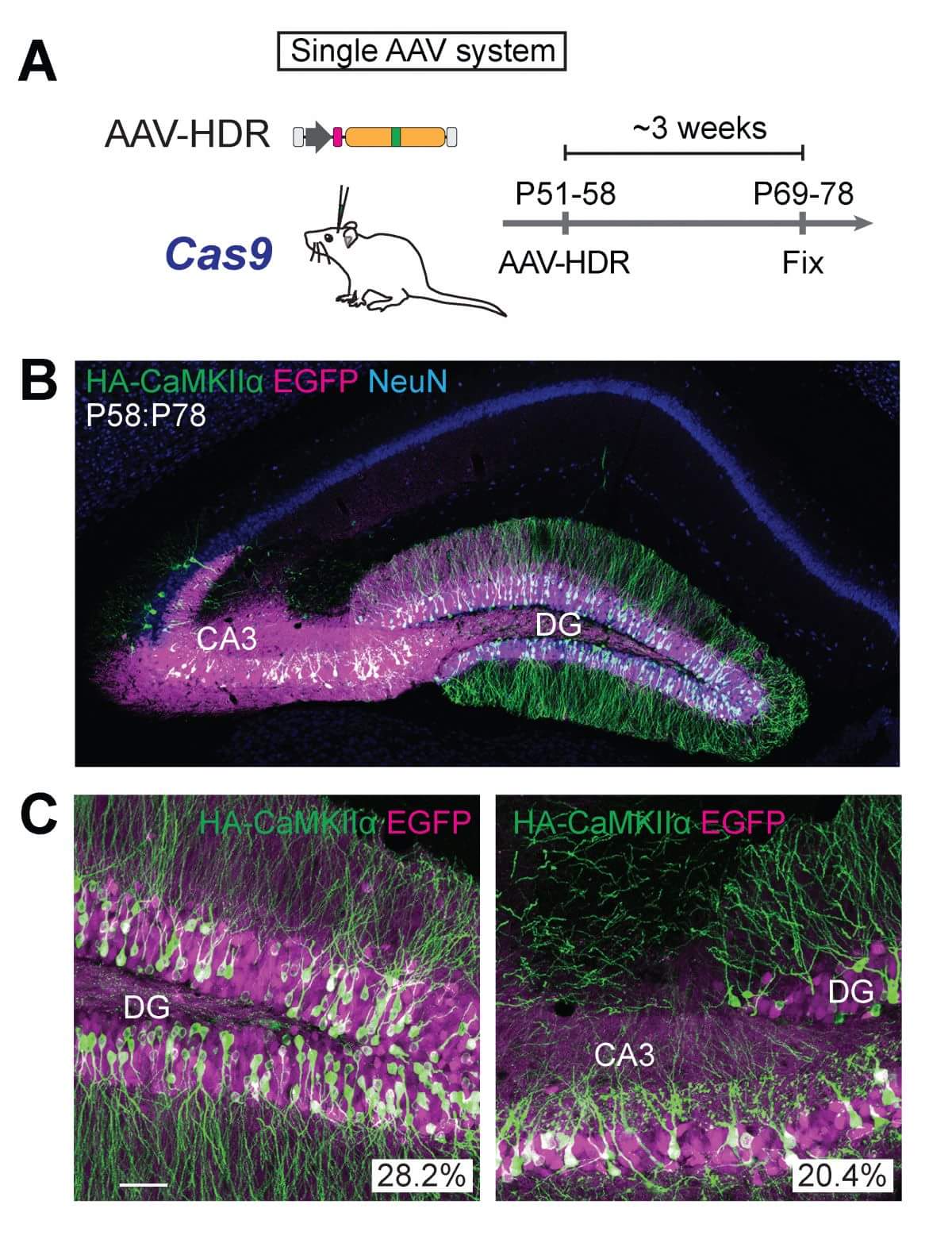LIMITS OF GENE EDITING
Technologies designed for editing the human genome are transforming biomedical science and providing us with relatively simple ways to modify and edit genes. However, precision editing has not been possible for cells that have stopped dividing, including mature neurons. This has meant that gene editing has been of limited use in neurological research — until now. Researchers at the Max Planck Florida Institute for Neuroscience (MPFI) have created a new tool that allows, for the first time ever, precise genome editing in mature neurons. This relieves previous constraints and presents amazing new opportunities for neuroscience research.
This novel tool is based on CRISPR-Cas9 gene editing technology. Originally, the CRISPR tool was discovered in bacteria, a defense mechanism against viral attacks. It works to “edit” the genomes in cells because, once inside them, it interrupts the DNA in a target location, causing damage, and then repairs it in one of two ways. Scientists favor damage repair via homology directed repair (HDR), which is less likely to result in errors, far more precise, and can allow for the insertion of specific genes. In other words, researchers use the HDR method because it enables them to add, delete, or modify genes to match their intended Goal.com
